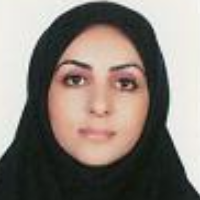A Comparison between the Structural Components of Women’s and Men’s Clothing Items with those in the Mural Paintings of Feasts in the Main Hall of Chehel Sotoon Palace, Isfahan, Safavid Period (907–1135 AH/1722-1501 AD)
Author(s):
Article Type:
Research/Original Article (دارای رتبه معتبر)
Abstract:
In Iranian painting types, one of the issues related to culture is emphasizing the realistic representation of clothing in terms of visual perception. The Safavid era artists have painted brilliant murals in the main hall of the Chehel Sotoon Palace in Isfahan, in addition to the display of royal glory. Due to the executive policy and the presence of foreign ambassadors in Iran during this period, part of the written history in travelogues has been reflected in paintings and murals. The importance of Safavid clothing in historical studies and its lack of independent investigation shows the necessity of the current research. This research seeks to answer these questions: How do the murals of the main hall of Chehel Sotoon Palace depict the dress of the Safavid period? What are the similarities or differences between the clothes in the murals and the historical descriptions of the Safavid period? And how are the structural components of the murals of Chehel Sotoon Palace in comparison with the clothing of this period? This research attempts to examine the drawings of women’s and men’s clothes and compare them with the written sources of the Safavid period. It also examines the features of the artists of the Safavid period. It also attempts to make a connection between the mural art of the main hall and the art of this period with previous periods to reveal the logical course of clothing developments in this period. This research employed a comparative method. The methods of data collection included library-field and the qualitative method was used for data analysis. The examination of the murals of the main hall reveals the characteristics of the clothing of this period and provides a detailed representation of motifs. The function of these representations is derived from real examples of clothing in this period and can be adapted to written sources. The findings of the present research show that there is an alignment between the written texts and the images of the murals and these works are examples of visual documents about the study of Safavid period clothing.
Keywords:
Language:
Persian
Published:
Journal of Art and Civilization of the Orient, Volume:12 Issue: 44, 2024
Pages:
6 to 19
https://www.magiran.com/p2737908
دانلود و مطالعه متن این مقاله با یکی از روشهای زیر امکان پذیر است:
اشتراک شخصی
با ثبت ایمیلتان و پرداخت حق اشتراک سالانه به مبلغ 1,390,000ريال، بلافاصله متن این مقاله را دریافت کنید.اعتبار دانلود 70 مقاله نیز در حساب کاربری شما لحاظ خواهد شد.
پرداخت حق اشتراک به معنای پذیرش "شرایط خدمات" پایگاه مگیران از سوی شماست.
اگر عضو مگیران هستید:
اگر مقاله ای از شما در مگیران نمایه شده، برای استفاده از اعتبار اهدایی سامانه نویسندگان با ایمیل منتشرشده ثبت نام کنید. ثبت نام
اشتراک سازمانی
به کتابخانه دانشگاه یا محل کار خود پیشنهاد کنید تا اشتراک سازمانی این پایگاه را برای دسترسی نامحدود همه کاربران به متن مطالب تهیه نمایند!
توجه!
- حق عضویت دریافتی صرف حمایت از نشریات عضو و نگهداری، تکمیل و توسعه مگیران میشود.
- پرداخت حق اشتراک و دانلود مقالات اجازه بازنشر آن در سایر رسانههای چاپی و دیجیتال را به کاربر نمیدهد.
In order to view content subscription is required
Personal subscription
Subscribe magiran.com for 70 € euros via PayPal and download 70 articles during a year.
Organization subscription
Please contact us to subscribe your university or library for unlimited access!



